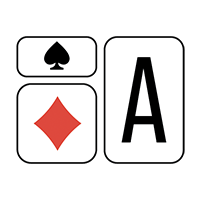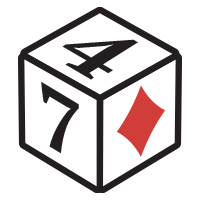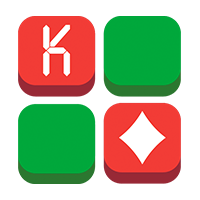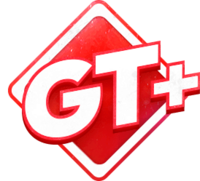Hey guys, this is URI Pelig with my first video for GTO Wizard. In this video, I'm going to examine a very practical question. There’s often a gap between ranges in the solver and ranges in reality. When you three-bet in a solver, you're going to get a mixed reaction; but in reality, a lot of players love their suited connectors and pocket pairs. So, what changes in strategy, and how can you make GTO Wizard apply to real-life situations? Let's dive in.
We'll start with under the gun (UTG) raising and the button three-betting. This is NL500 rake, and you can see the button's three-bet range is already mixed.
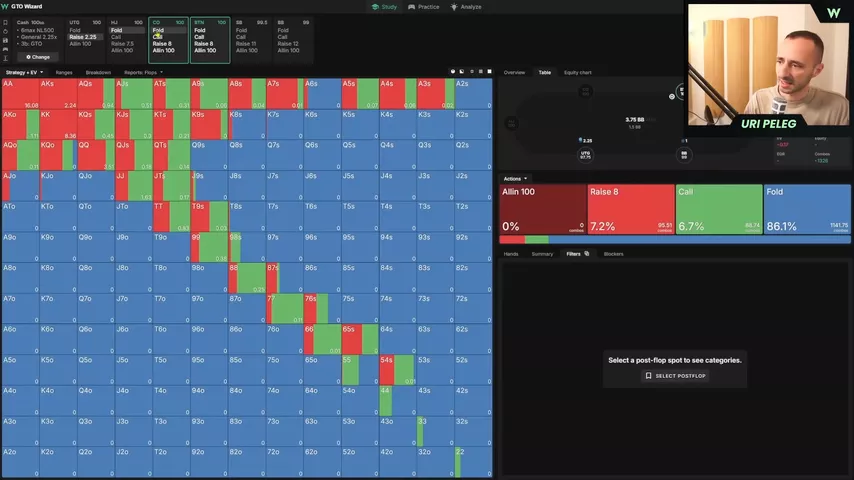
However, we’re actually going to look at the calling range. When you make everyone fold, this is the calling range you would get at NL 500 rake for under the gun.
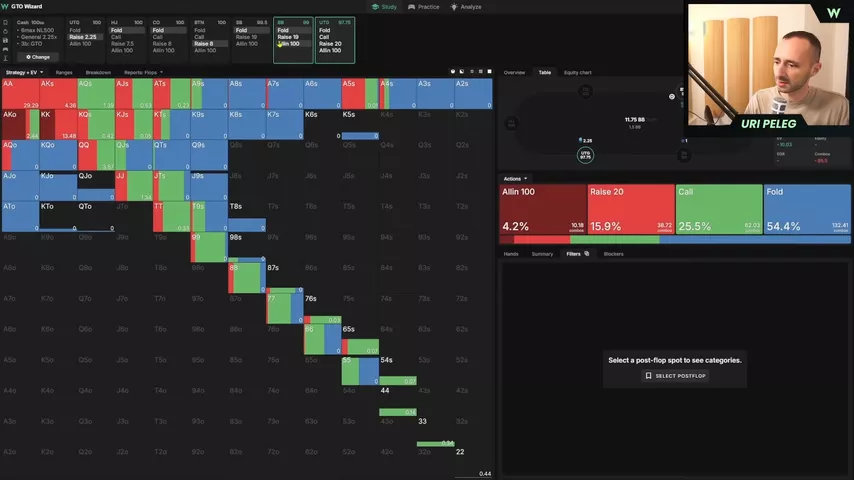
Note that there are a few mixes here that might not make sense from a practical standpoint. One is that sevens, sixes, and fives are folding, and I think a lot of players would always call these. The second is fours and threes and deuces; they’re not even always raising. That's why you see them calling, but they are not represented very much.
Similarly, when we look at suited connectors like 5-6, 6-7, and 7-8, they didn’t often raise, and 8-9 and 10-9 are folding. Queen-Jack, Queen-Jack suited, and Queen-10 suited are also folding. I think there is a rather wide swath of players who would, first of all, always raise these hands, and second of all, never fold these hands to a raise. That’s going to create a different range situation. By examining it, we’re going to understand a bit of the reasoning for these faults—not all of it certainly, but also what would be a practical adjustment.
I hope that by watching me do this, you can do similar things yourselves in the future. We have the three-bet and we have UTG calling, and we're going to click "solve post-flop" with AI. This is where we get to edit the ranges.
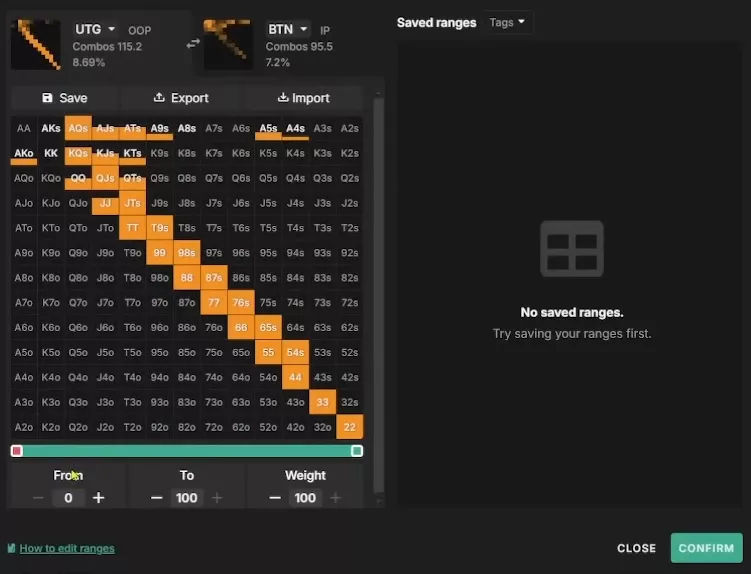
We can go to UTG’s out-of-position range and say, “Well, all these hands in here—we're going to go with deuces, threes, fours, fives, sixes, sevens, eights, nines, tens—all of these are going to be full frequency.” The same goes for suited connectors. This is a big difference. Similarly, this applies to Queen-Jack, Jack-10, and let's put in Queen-10 suited and King-10 suited as 50% hands.
I think this is a much more realistic representation of what a decent number of players you encounter will do. I'll even add in some Ace-4 and Ace-5.
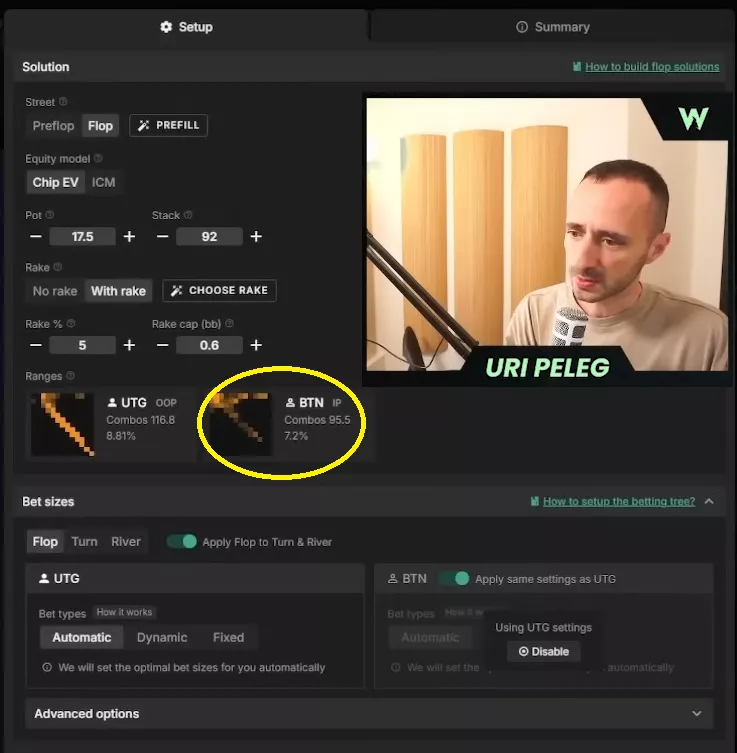
Of course, once you know this, you can even edit your three-betting range.
A nice thought experiment would be to say, “Oh, this is the three-bet range; this has mixed hands. Are there hands that perform better or worse when my opponent is flatting all the pocket pairs and suited connectors?” The answer is that Jacks and Tens are probably going to do really well, and nines are probably going to do really well as well. A hand like King-Queen suited or Ace-Jack suited performs well against pairs and suited connectors, while a hand like Four-Five suited does worse when your opponent is calling with his sixes and sevens.
You might want to simplify this by saying, “Oh, well, my opponent is likely a calling station, so I'm going to remove the weaker parts of my range and increase the stronger parts.” That’s a fairly straightforward adjustment.
Now, we’re going to look at a few boards and examine the differences to solidify this concept. I think one or two boards should suffice. We're going to start with an board.
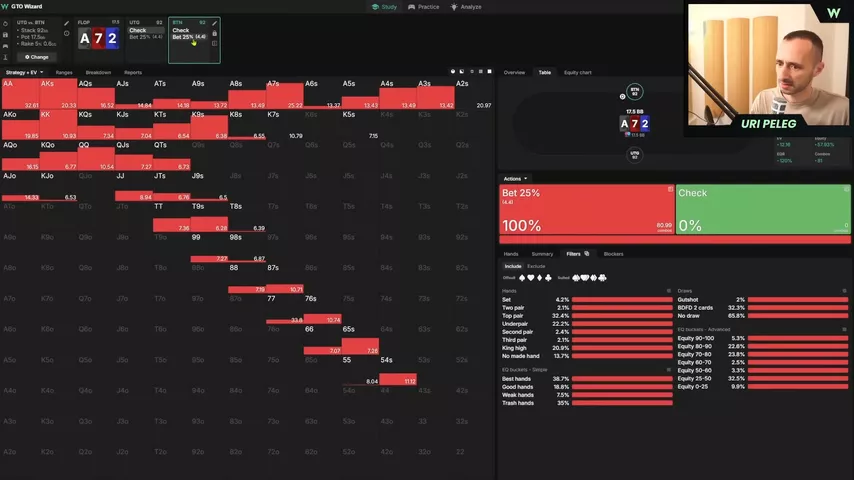
I’ll bring up this range side by side.
The normal range has a 100% continuation bet (CB) and the expected value (EV) for in-position is 12.16, with equity at 58%. After the continuation bet, we see this reaction: 15% check-raise, 45% fold, which is a big overfold. This is because we picked a board that’s very good for the in-position player. Many of the hands that flat the three-bet are kind of speculative hands like the suited connectors and the pairs, which don’t improve very much. This is a good board for the three-better, so the out-of-position player has to overfold to make up for that. There’s no point in carrying your weaker range another street to a bigger pot, so you overfold.
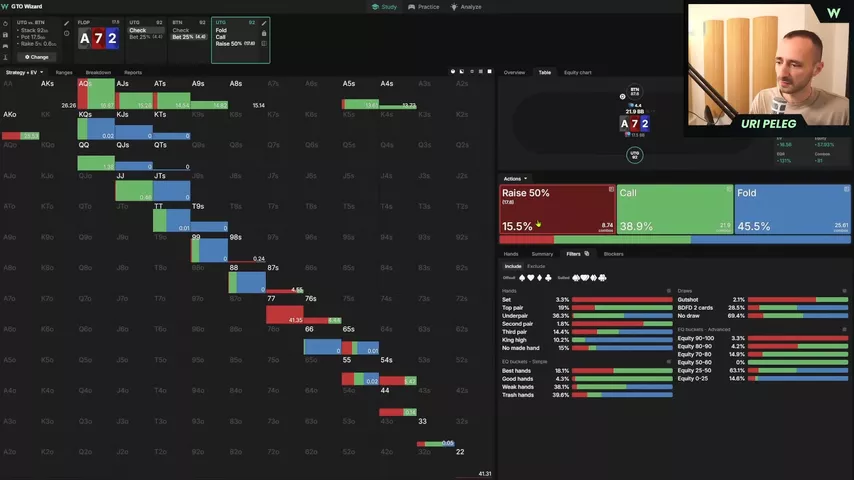
Now, how’s this going to change when we add more 87, 76, more deuces, and also more threes, fours, and fives to the out-of-position player’s range? Keep in mind these numbers: the EV for the in-position player is 16. Before the bet, the EV was 12.16 and the equity was 58%. Now, it’s the same simulation, but in this case, we have this full frequency of suited connectors and pocket pairs. Despite hitting more sets, the EV for the in-position player increased to 12.2, and the equity grew significantly to 61.5.
So what's going on here? This may seem a bit strange, but it cuts to a really important core aspect of poker. While we did add sevens and deuces, we also added sixes, fives, fours, and threes. Overall, the range got weaker, and in-position gains equity. However, equity is not created equal, and the equity of sevens and deuces is so significant that, despite this big equity shift, the in-position player gains expected value (EV), but not by millions of EV points.
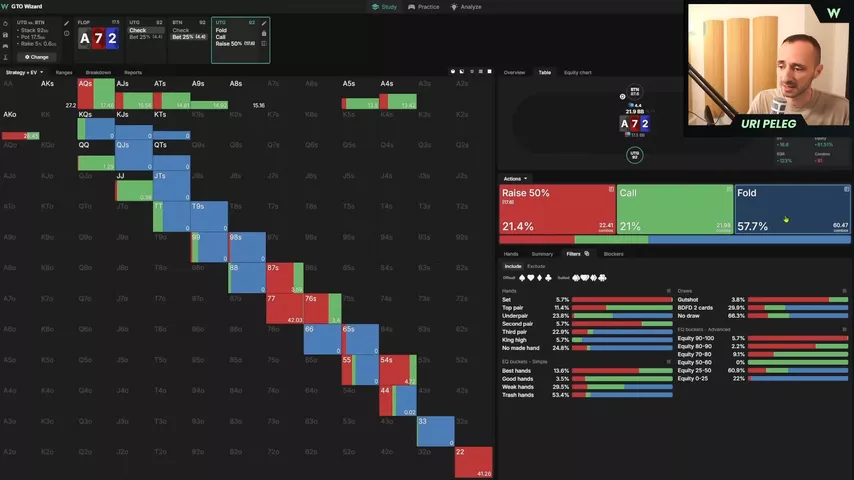
What’s going to happen is that when we check and the opponent bets, yes, we are going to fold more. Remember, this was folding 45% before, but we are also going to raise more because we have more of the polarized range. Now we see a check-raise frequency of 21.5% versus 15%, which is almost a 50% increase in check-raising in this specific example.
I’m going to show you another scenario. We can see that adding these pairs and suited connectors affects the game. On one hand, we hit the flop, but we also have to fold more. On the other hand, we hit sets more often, allowing us to bluff-raise more aggressively. Both of these factors are important to keep in mind. Players who are flatting all these hands are going to overfold to a continuation bet, or at least they should; perhaps they’ll choose to call you with sixes. At the same time, they are likely to hit more, so you're going to face more counter-aggression.
You might say, "Okay, you picked the worst board with A-7-2; let's pick a board that’s much nicer." Here, we have . Now, sixes and sevens, along with 6-7 suited, and hands like 8-9 suited and 4-5 suited, are hitting a lot more. So what happens now?
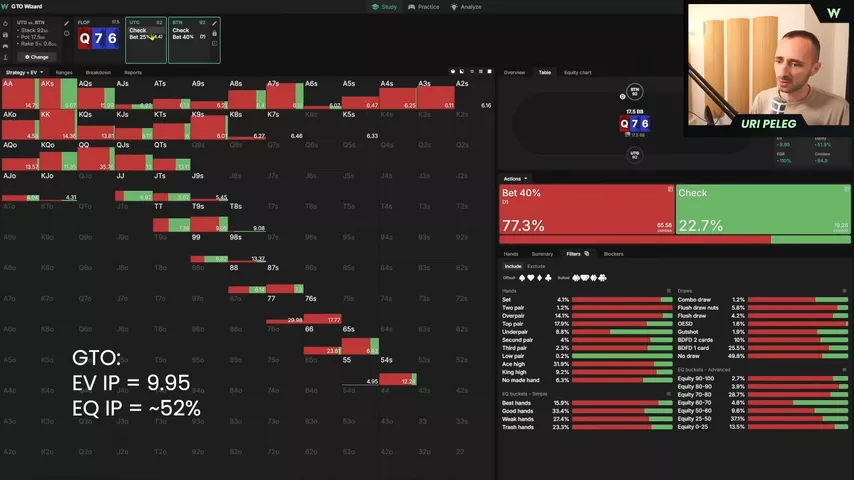
In the normal ranges, where we see these hands are more mixed, the equity for in-position is 52, and the EV is 9.95. Remember these numbers: 51.9 for equity and 9.95 for EV. When we compare these, the strategy when you check is that the in-position player bets very often, but not always, with a fairly large size. The out-of-position reaction is actually to check-raise a lot. The big size puts you in a situation where you’re not very incentivized; you don’t have many hands that can call, so a lot of your response becomes raise or fold.
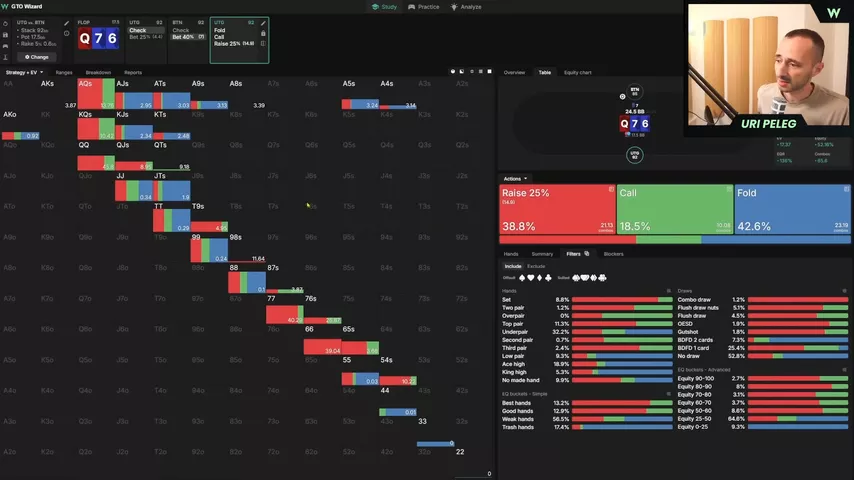
These raises are often protection raises with nines; it’s not exactly a bluff or value bet; it's a tiny raise where you're just trying to deny some equity from overcards before you need to play the hand later. This is the dynamic with an 80% continuation bet. Remember, the EV was 9.95 and the equity was 51.99. Now let's look at what happens with the more dense range that’s going to hit more.
Take a moment and guess who’s going to have more equity and who’s going to have more EV.
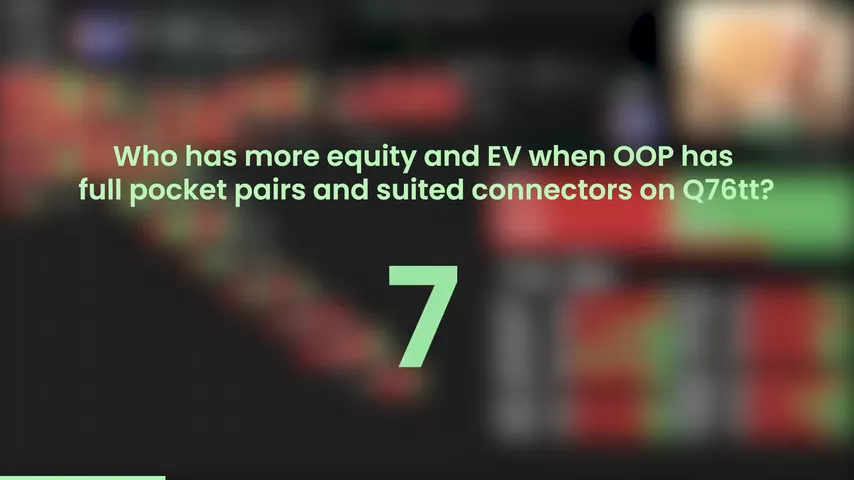
Now we're within the UTG range, and surprisingly enough, even though we picked a board that seems to smash this range, the EV for in-position actually increased from 9.95 to 10.24—almost a third of a big blind—and the equity increased. So what’s going on here?
I’ll bring you back to the same concept as before. Sure, sixes and sevens, and suited connectors are great, but what about fives, fours, threes, deuces, Ace-4, and hands like Jack-10 and 10-9, which are nice but not very strong? When we add this top range, we also incorporate a lot of weak hands. This is what transpires when you throw in suited connectors and pocket pairs into a range, and perhaps this can lead to an understanding of why there’s a limit to how many of them you want.
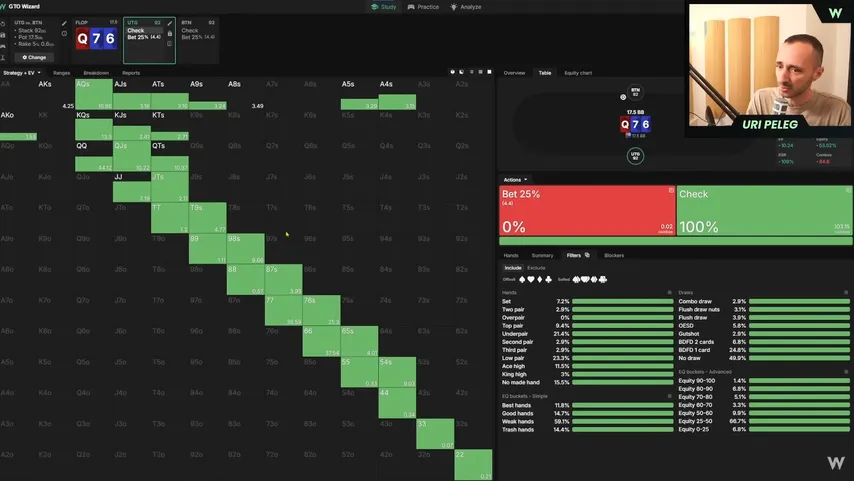
These hands have a polarized reaction to the flop: they either hit something very strong or something very marginal, and they don’t often hit in between.
So how does the in-position player react here? The answer is that he actually bets more often with a smaller size. Because the out-of-position player has more strong hands, the in-position player is less incentivized to build a pot. However, because the out-of-position player also has more weak hands, the in-position player is equally less incentivized to probe at the pot.
This will likely be a general principle: when you change the structure of your range to include more strong hands but also more weak hands, smaller bets become more appropriate. When you remove the pocket pairs and make the range one that hits top pairs and middle pairs with high cards, you're probably going to see more big bets and a greater emphasis on a polarized region.
And of course, once the small bet hits, there is not as much of the extreme raising that we saw before, which also isn't a common practice; almost no one plays like that. However, we do have sixes and sevens, and with hands like deuces, threes, and fours, there is also a lot of folding, resulting in a slight overfold to this quarter pot bet, even though we hit the board quite nicely.
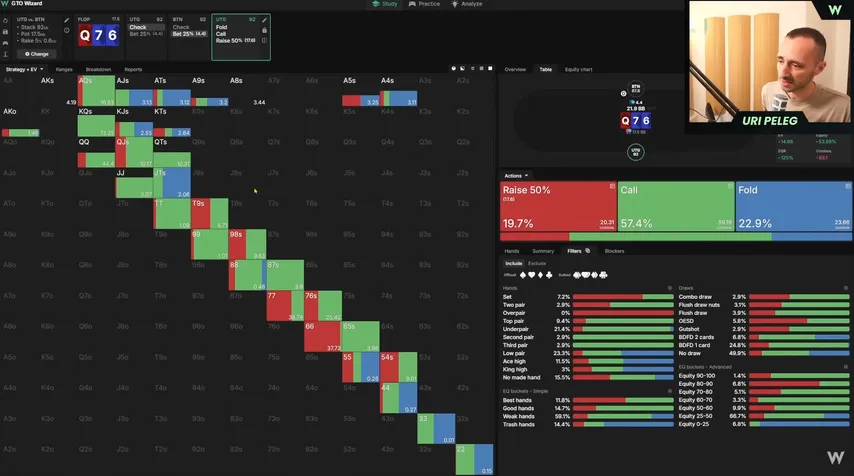
Now, let's finish off with the most extreme board we can think of for this kind of range. I'm actually going to change this to . As good of a board as you can think of for the suited connector and pocket pair range, we see that in the normal ranges, this board gets hit 25% of the time. The expected value (EV) for the in-position player, of course, is at a disadvantage now. This is about as bad as it gets; you could make this monotone, but I'm not even sure that’s the worst scenario since all your Ace-Kings would now have a flush draw. The EV drops to 7.9 and equity is at 46.5.
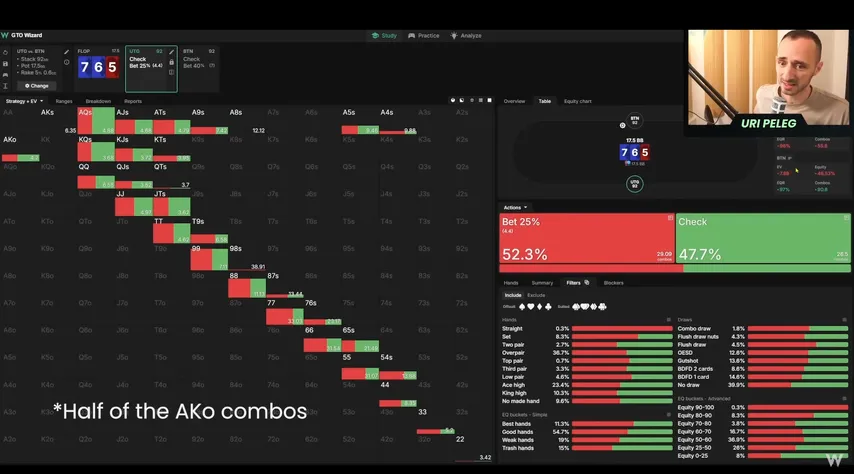
With a disadvantage in equity, we see the out-of-position player actually taking the betting lead. Yes, when we put in the effort, we can create a board that is better for this range than the other range. The EV for the in-position player drops significantly to 6.31, which is a drop of 1.2 big blinds, and equity falls by 2%. The out-of-position player can now lead with everything.
This highlights another difference to consider: for this range—5-6-7, 6-5-4, and 5-4-3—it doesn’t matter how low the board is; it still smashes it. In contrast, the game theory range, because it has low pairs and low suited connectors less frequently, doesn’t hit every board equally. For example, hands like 6-5-4 and 8-7-6 will not be hit to the same extent by the game theory range, whereas this new range is more symmetrically smashing all of these types of boards.
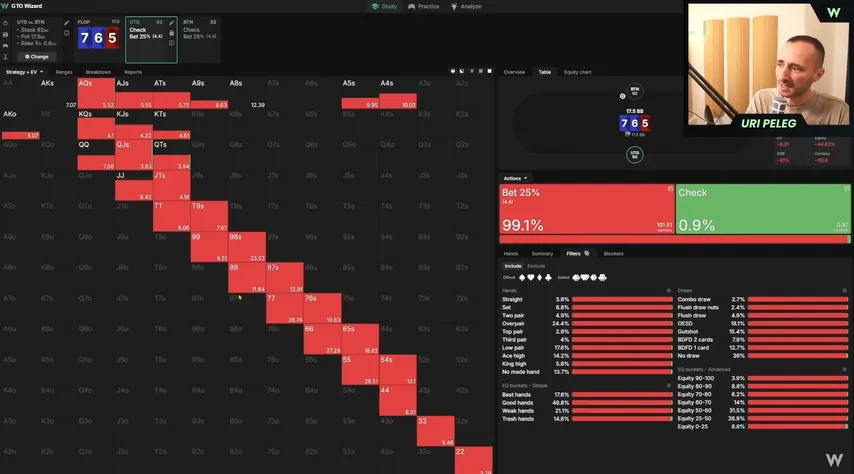
Okay, guys, we’re going to wrap up with that. I hope this was useful for you. You can use this exercise to play around with ranges, and I think it's very beneficial to see the difference and to actually look at a realistic representation of strategy and ranges when you practice. There is no need to work with imaginary ranges when you're playing against real opponents. These programs can allow you to input the ranges and the betting strategies. There is a lot of flexibility, and once you understand the principles and the range interactions, you can hopefully take that knowledge and generalize it to your play at the tables.
I hope you enjoyed this one, and until next time.
